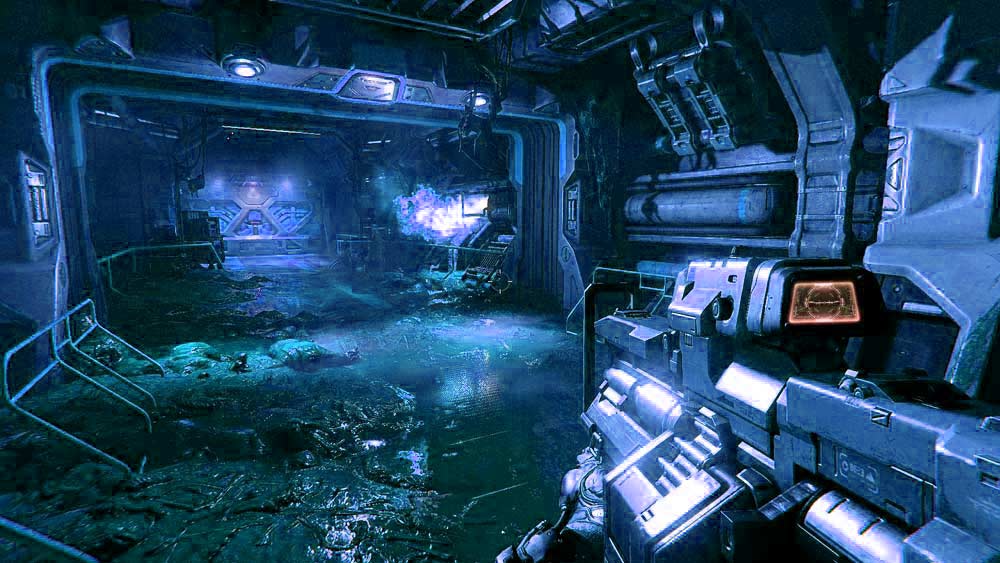
2475 Autoimmun-Mem Ausbruch

Ein toxisches Mem verbreitet sich in Südaustralien (New South Wales). Die Infektion wird ausgelöst durch die Khulapana-Memgruppe. Infizierte schalten Memfilter ihrer Implantate ab und öffnen sich für neue Ideen. Die Memgruppe propagiert eine Philosophie der Offenheit und des unkritischen Umgangs mit Ideen. Die übliche elektronische Filterung wird als schädlich und unnatürlich angesehen. Es gibt starke missionierende Elemente. Betroffene sind davon überzeugt, dass sich viele Probleme lösen lassen, wenn Menschen aufeinander zugehen und die Überzeugungen des jeweils anderen annehmen. Der missionierende Charakter sorgt für eine rasche Ausbreitung. Betroffen sind vor allem indisch dominierte Stadtviertel von New South Wales im Warrnambool / Geelong / Melbourne Megaplex.
Direkte Folge der Infektion ist eine leichte Desorientiertheit aufgrund der oft widerstreitenden Gedanken, Ideen und Theorien, die verarbeitet werden müssen. Die indirekten Folgen sind wesentlich gravierender. Da sich die Memgruppe aktiv gegen technische Schutzmaßnahmen richtet und Betroffene ihre Memfilter abschalten, fehlt die Abwehr gegen andere unabhängige Meme in der freien Wildbahn.
Zu jeder Zeit sind starke Meme im Umlauf. Viele sind Werbebotschaften, die in allen möglichen Formen erscheinen, von simplen Ohrwürmern bis zu Fandom-induzierenden Themen. Es gibt politische Memgruppen, die mit Hilfsmemen arbeiten, z.B. Verschwörungstheorien, moralische Überlegenheit, ethnische/tribal-Elemente, Diffamierungs- und Angstkampagnen. Zusätzlich gibt es eine bunte Vielfalt überzeugender Ideen von künstlichen Religionen und Sekten bis zu Urban Legends, die eigentlich harmlos sind, aber über den "Wahrer Kern"-Mechanismus doch Überzeugungen beeinflussen können oder zumindest andere Meme stabilisieren.
Unzählige Meme sind Überreste vergangener Kampagnen, die immer noch im Umlauf sind. Viele sind im Lauf der Zeit mutiert, haben sich von der ursprünglichen Funktion entfernt, sind selbständig geworden oder gedeihen in Symbiose mit anderen Memen. Vielfalt und Stärke der Ideen, die im 25. Jahrhundert auf Menschen in vernetzten augmentierten Umgebungen einstürzen, sind vielfach höher als vor der Zeit wissenschaftlich fundierter Memetik und industriellen Memdesigns. All diesen Memen sind Khulapana Opfer nahezu schutzlos ausgesetzt. Die Folgen sind sehr unterschiedlich, abhängig davon, welche Meme sich aufgrund des fehlenden Schutzes einnisten können.
Die Infektion breitet sich über mehrere Monate schnell aus und wird dann im Lauf der nächsten fünf Jahre eingedämmt. Hunderttausende Betroffene werden behandelt. Sie durchlaufen psychische Dekontamination und Rehabilitationsmaßnahmen. Die Anamnese ist aber oft schwierig. Hilfsmeme von Khulapana versuchen eine Aufdeckung der Infektion zu verhindern und die sichtbaren Symptome unterscheiden sich, je nachdem welche Meme auf der Khulapana Infektion mitreiten. Deshalb sind Autoimmun-Meme so gefährlich.
2478 Großrazzia im Asteroidengürtel

Bericht eines Polizeieinsatzes von Norden Esstisch, Kommandant SEK, Iris Cloning Enforcement Administration, Iris City, 2478:
Unser Ziel war eine alte Tankstation auf Asteroid 14387. Die Station war nach vorliegenden Daten vor 15 Jahren aufgegeben worden. Zumindest war das der letzte registrierte Tankvorgang. Danach gab es keine Maintenance-Besuche mehr. Statistische Verkehrsanalysen und andere indirekte Hinweise deuteten darauf hin, dass 14387 als illegale Fertigungsanlage arbeitete. Ermittlungen im Jahr 2477 im Zusammenhang mit einem endgültigen Mord in Vesta Prime gingen in die gleiche Richtung. Der aktuelle Einsatz kam zustande, nachdem ein illegales Lager von Bioroiden ebenfalls auf Vesta Prime aufgeflogen war. Die dabei angefallenen Lieferdaten enthielten indirekte Hinweise auf die nähere Umgebung von 14387.
Wir näherten uns dem Ziel im Ortungsschatten von 56288. Für die letzten 300k Kilometer mussten wir den Schatten verlassen, um zu 14387 vorzustoßen. Die drei Stunden verbrachten wir bei 1,5 G zum Zero-Intercept minus 2000 km. Der Anflug war so geplant, dass wir uns dem Ziel auf der abgewandten Seite näherten. Als Planungsunterlagen hatten wir die alten Backups der Betreibergesellschaft herangezogen. Die Daten sagten uns natürlich nicht, dass neue Sensorplattformen den Himmel des Asteroiden fast lückenlos (3,5 Pi) abdeckten. Das merkten wir erst später.
Jedenfalls schickten wir bei 100k Kilometer Entfernung drei Naherkundungssonden. Die Sonden bezogen ihre Orbits und nahmen drei Minuten vor unserer Ankunft den Aktivbetrieb auf. Zwei davon erwischten sie sofort. Die dritte sendete uns immerhin einen Scan, bevor sie neutralisiert wurde. So waren wir gewarnt. Sie aber auch. Es war auch klar, dass sie genügend Zeit gehabt hatten, die Verteidigung zu organisieren. Kein Überraschungseffekt also. Aber nach kurzer Rücksprache mit den anderen Sektionsleitern entschied ich mich trotzdem, den Einsatz fortzusetzen.
Auf der Basis des Sonden-Scans ließ ich auf die Verteidigungsstellungen feuern. Das machten die AKV-Offensivdrohnen und die Launcher der Transporter. Danach schickten wir einen Zug Nahkampfdrohnen hinein. Leider wurde eines der zwei Shuttles im Anflug abgeschossen. Das zweite setzte seine Drohnen ab und erhielt einen Treffer beim Abflug. Der halbe Zug stieß auf starken Widerstand von automatischen Geschützen. Wir mussten den Zug aufgeben und neutralisierten die Bodenverteidigung mit den AKV. Anschließend setzten drei Shuttles eine weitere Kompanie unserer Kampfdrohnen ab. Die Drohnen drangen bei schwachem Gegenfeuer in den Komplex ein. Ihnen folgten neun Kontaktspezialisten in Battle-Armor aus drei Richtungen. Einer der Stoßtrupps stellte den einzigen Menschen der Anlage. Ihr Name war Alaiia Zucca. Sie tötete sich selbst, bevor sie immobilisiert werden konnte. Zuccas Gehirn war zu stark zerstört zum Ghosten, aber die Infowar Leute hatten mehr Erfolg. Nachdem die Infiltratoren uns Zugang verschafft hatten, konnten wir drei KIs festnehmen. Ein KI namens Haratani Zindato-Vilmouth, der anscheinend die Operation leitete, enthielt wertvolle Hinweise auf Syndikatsstrukturen und Vertriebsnetze. Die Frau war vermutlich nur in untergeordneter Funktion tätig.
Wir fanden tatsächlich Produktionsanlagen für Bioroids. Zusätzlich auch noch mehrere Drogensynthesizer, vor allem Pitchou und Darkstar Derivate. Die Bioroids waren in verschiedenen Produktionsstadien, von Zellkulturen verschiedener Gewebe, bis zu ausgewachsenen Bioroids. Einige saßen sogar in den Programmiergeräten als die Kontakteinheiten eindrangen. Das Ganze sah nach einer unter Volllast laufenden Fertigungsstraße aus. Leider erlitten 15 ausgebildete Bioroids explosive Dekompression als die zweite Welle der Drohnen den Zugang aufbrach. 22 Bioroids konnten gerettet werden. Davon waren zehn für verschiedene Servicefunktionen (siehe Laboranalyse), der Rest offensichtlich Pleasuremodelle.
Insgesamt kann der Einsatz als Erfolg betrachtet werden. Die hohen Verluste unter den Drohnen sind zu bedauern. Sie sind auf die unvollständige Datenlage zurückzuführen. Es gab keine ernsthaften Personenschäden. Dafür konnten aber mehrere mutmaßliche Rogue-KI in leitenden Funktionen gefangen genommen werden.
- Material: 3 Mannschaftstransporter, 5 Materialtransporter, 180 Kampfdrohnen (1:3 Defender/Enforcer Mix) in 2 Kompanien, 4 Vestigo Sonden zur Naherkundung, 1 PointDev3K Missile Defense, 2 AKV Offensiveinheiten, 3 EM-Plattformen, 6 Shuttle (2 Tukker und 4 KQ3), 3 Kurzstrecken Missile-Launcher, 16 Battle-Armor.
- Personal: Einsatzleitung: 3, Drohnen Operator: 5, Besatzung Kampfeinheiten: 6, Gepanzertes Kontaktpersonal: 9, Med: 2, Infowar-Infiltration: 2, Infowar-Analytik: 3.
- Materialschäden: Vestigo Sonden (Totalverlust: 3), Shuttle (Totalverlust: 2), Drohnen (Totalverlust: 72, beschädigt: 12), Battle-Armor (Totalschaden: 2, beschädigt: 5).
- Personenschäden: 3 Personen mit leichten Verletzungen.
Neue Beiträge
2158 Space Patrol
2222 Weltraumpiraten
2326 Kein interplanetarer Krieg
3050 Königliche Garde
3090 Solo Ehre
2234 Am Ende des Orbits
2248 Gemini-Katastrophe
2366 Orbitale Ökonomie
2312 Kaio-Artefakt
3361 Erste Menschheit
2333 Metrische Impulsverstärkung
2337 Verschwörung im Orbit
2247 Quantensprung
2284 Trennung der Erde
2321 Isolation der Erde
2205 Unternehmensnationen
2192 Antiexpansionistischer Terror
2179 Private Asteroidenbasis
2231 Vereinte Planeten
2291 Verbotene Forschung
Die Besten
(20 von 75)
2158 Space Patrol
2179 Private Asteroidenbasis
2234 Am Ende des Orbits
2291 Verbotene Forschung
2303 Raumhändler-Putsch
2312 Kaio-Artefakt
2412 Pontos Mission
2535 Tragödie von Cobol
2560 Fakultät für Exotechnologie
2630 Verschwörung gegen die Menschheit
2720 Spacedom-Tragödie
2725 Auch Maschinen haben ein Gewissen
2841 Leuchtender Tempel
2844 Digitale Entdeckung
3042 Galaxien
3050 Königliche Garde
3131 Roboter und Drachen
3190 Überraschungsangriff
3245 Sterge-Blockade
3365 Quantensprung
 2471
Krieg auf der Venus
2471
Krieg auf der Venus

 2482
Flug der Tanxian Zhe zum Alpha Centauri System
2482
Flug der Tanxian Zhe zum Alpha Centauri System